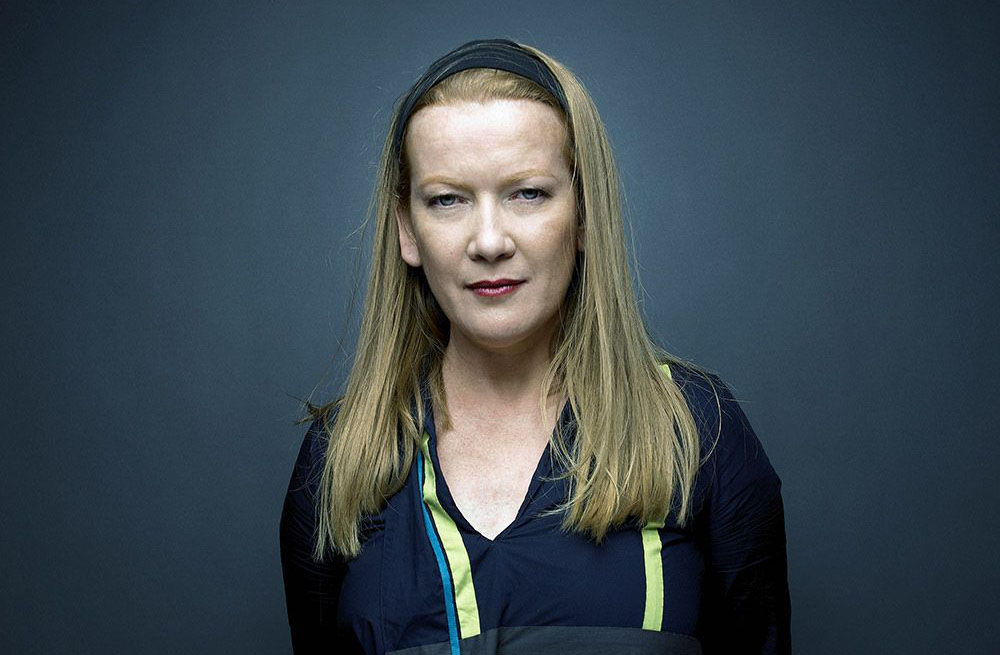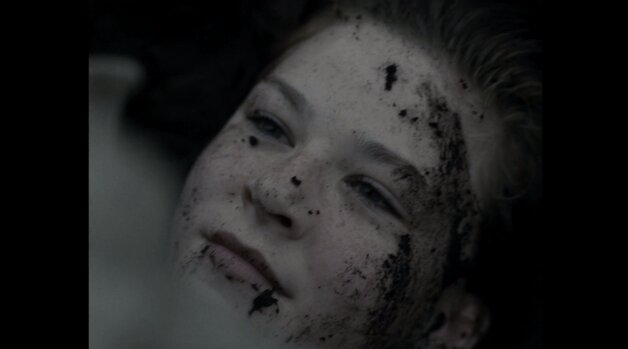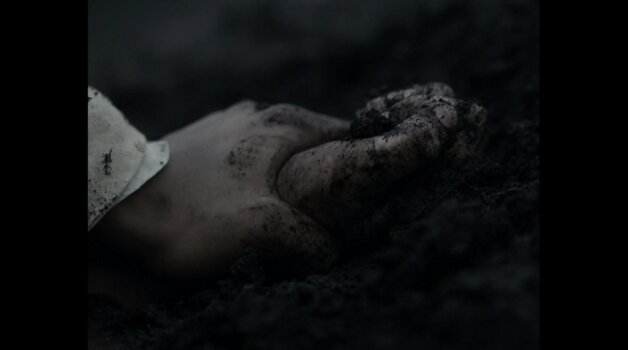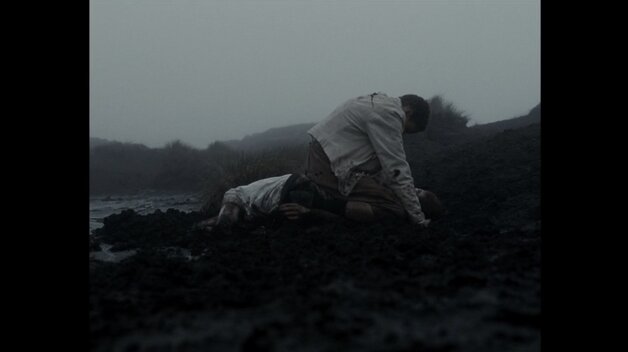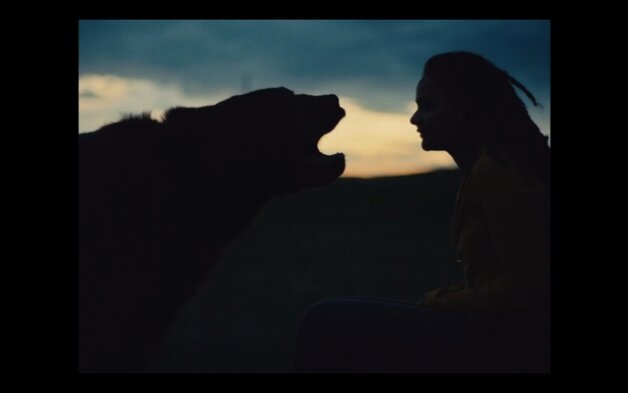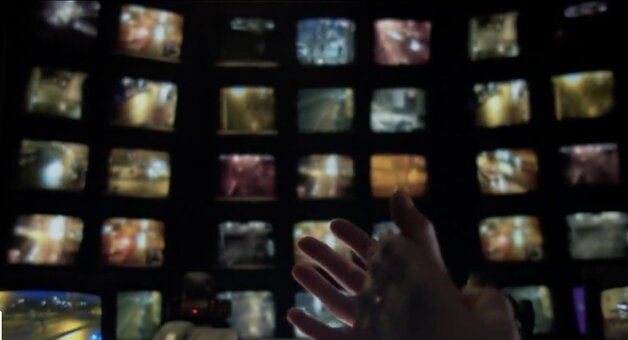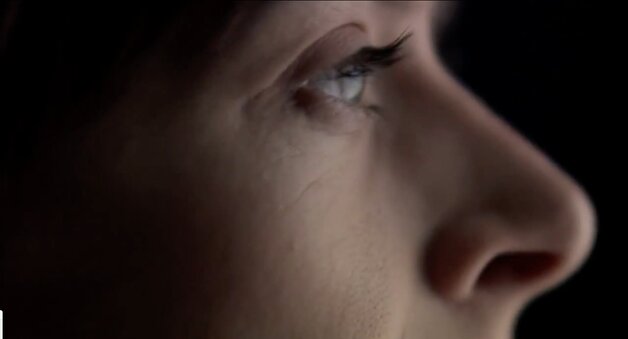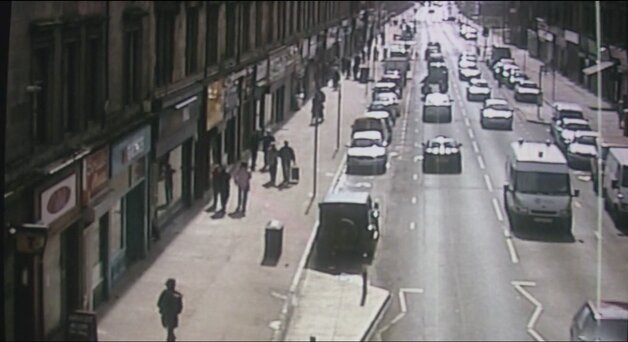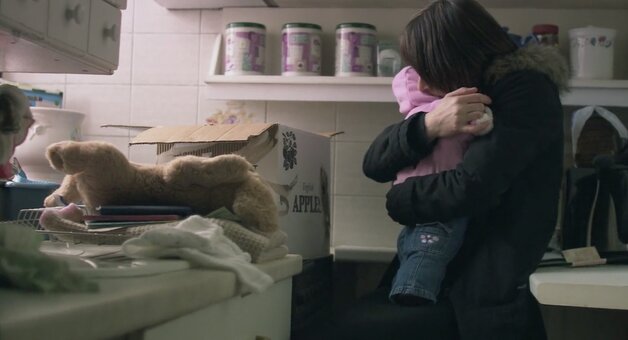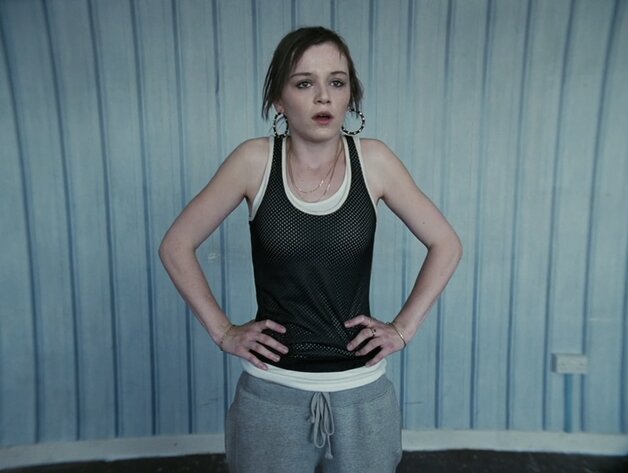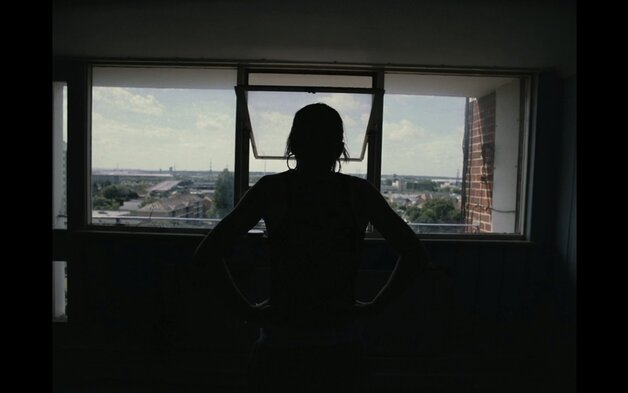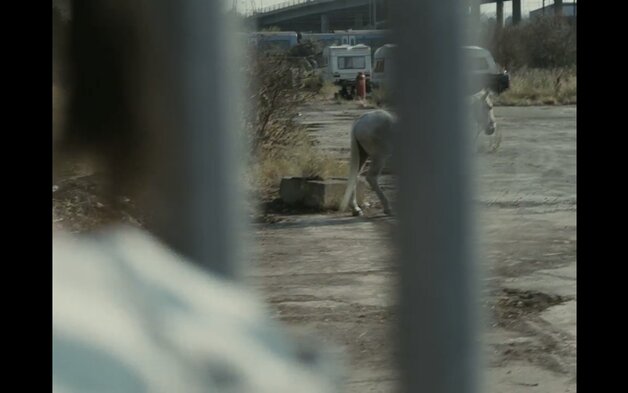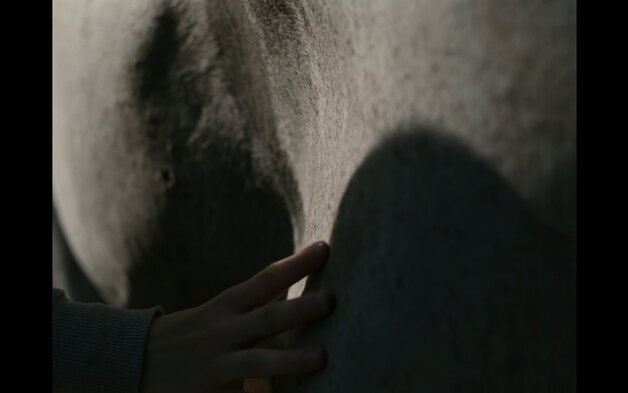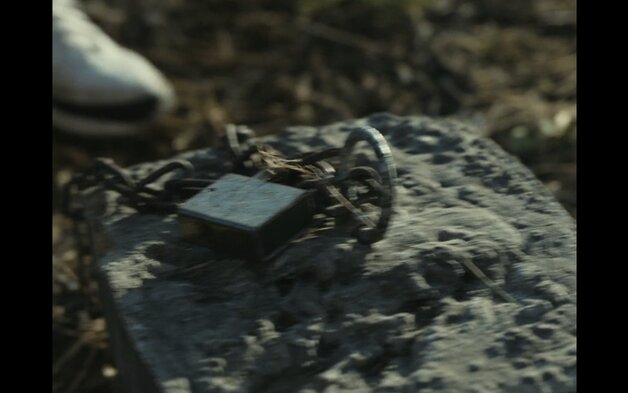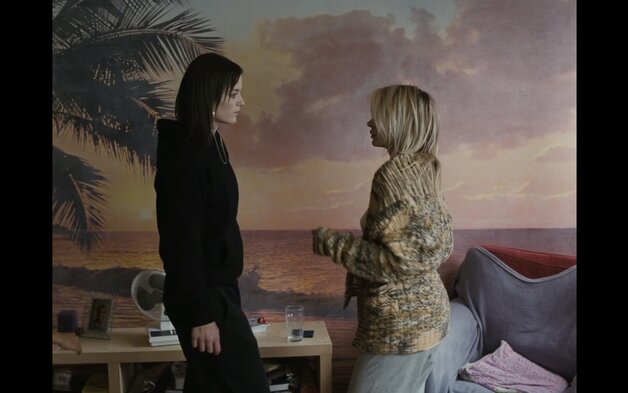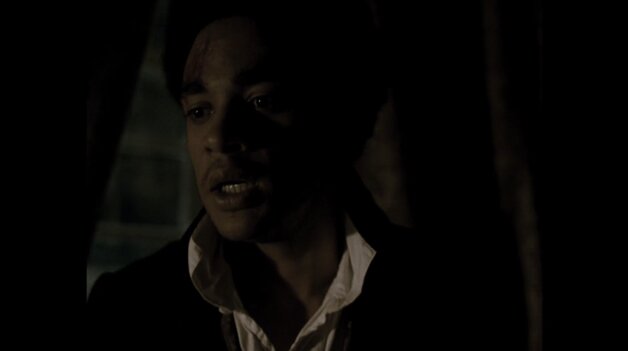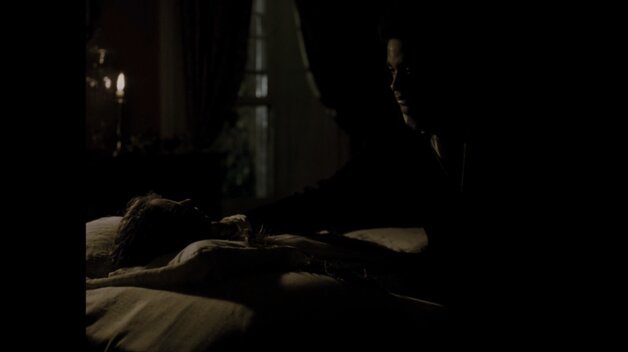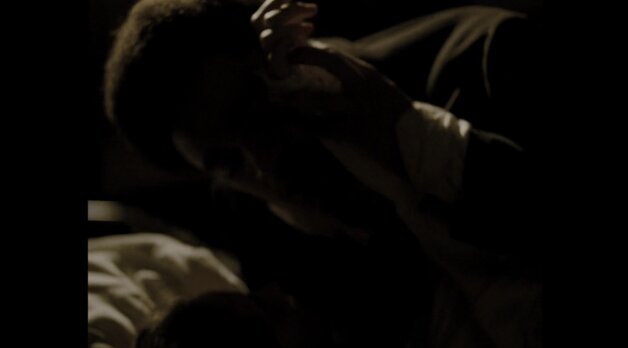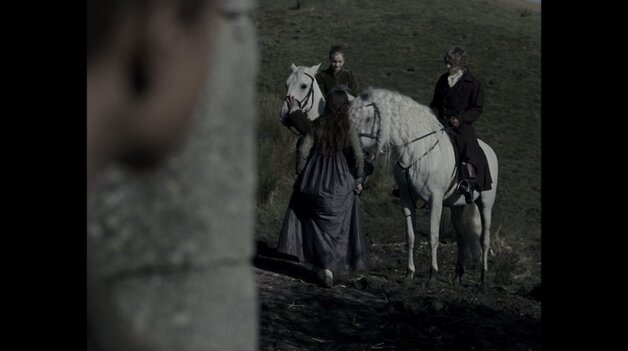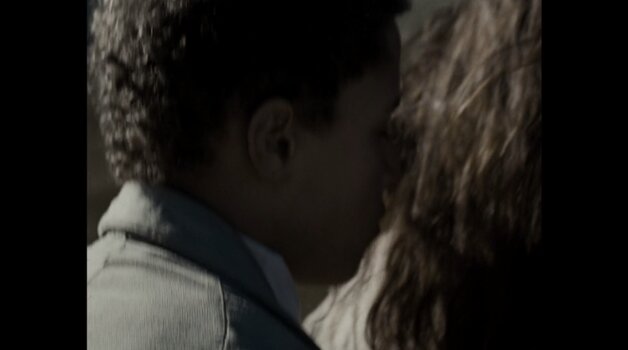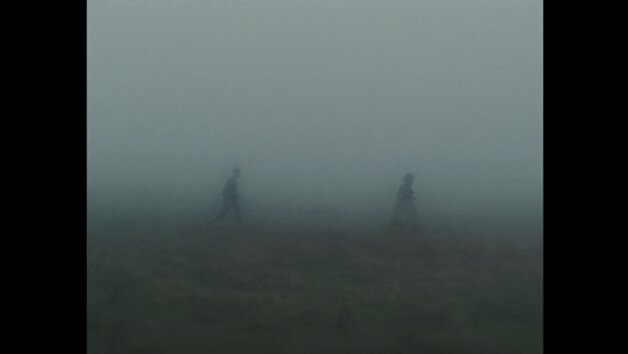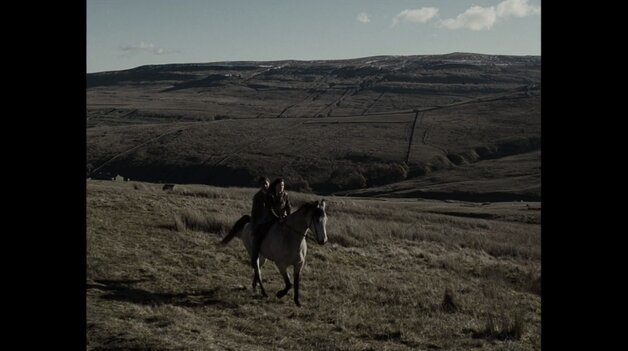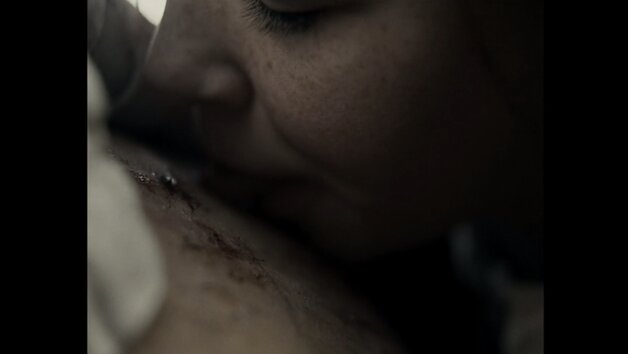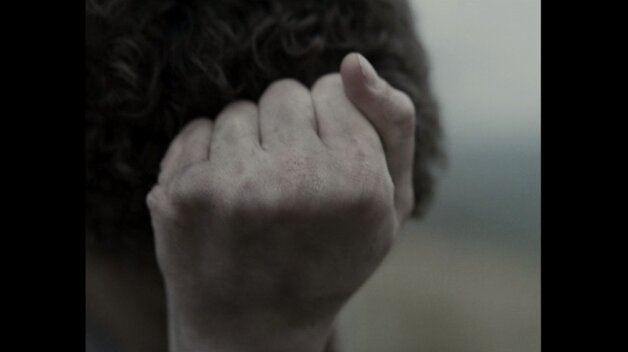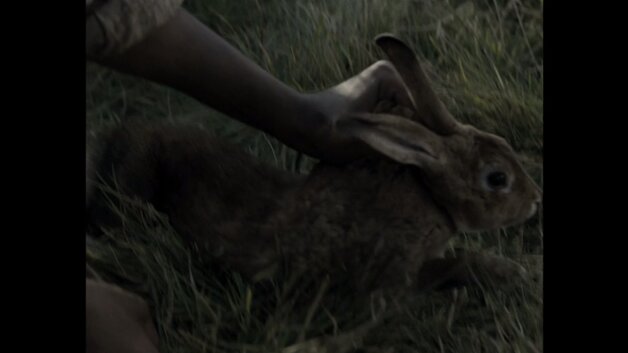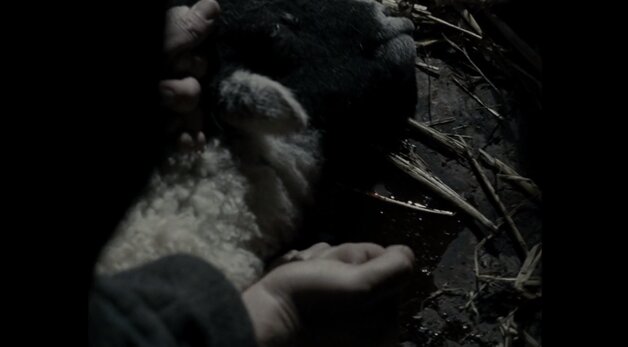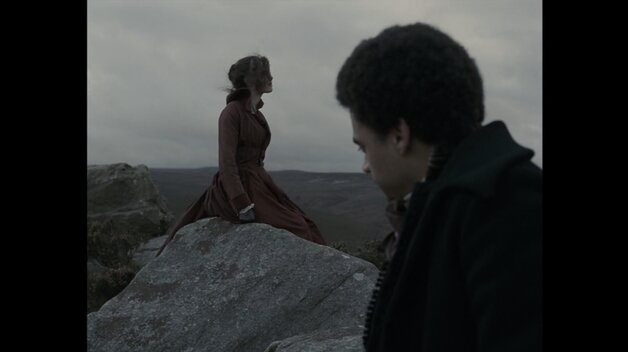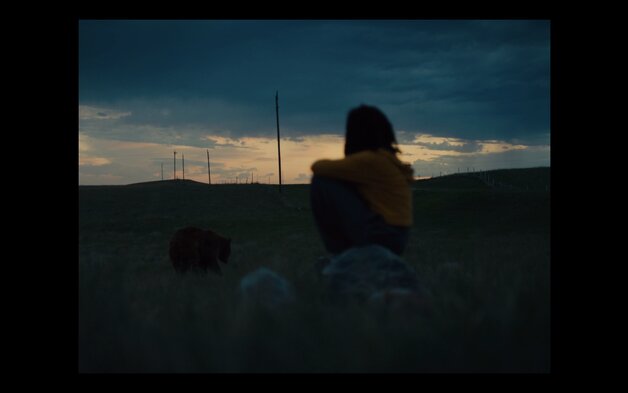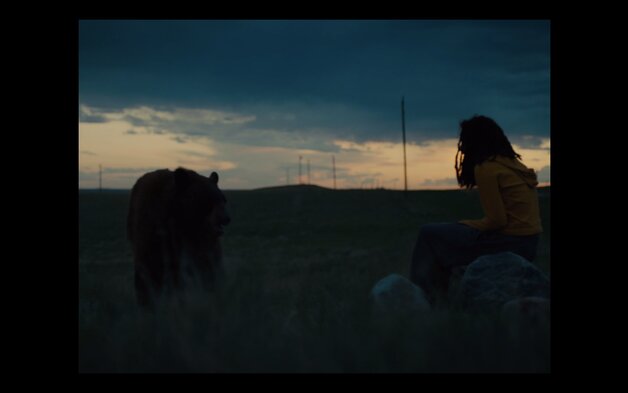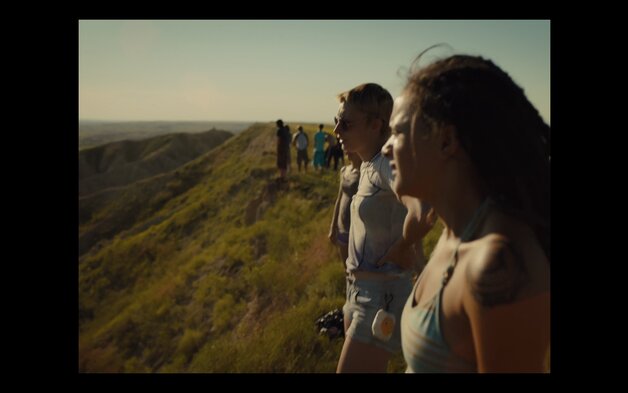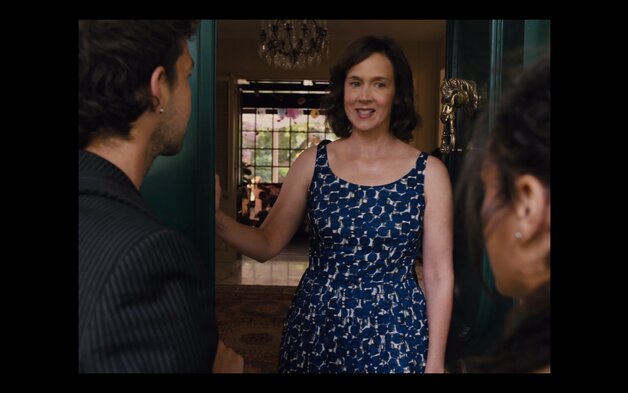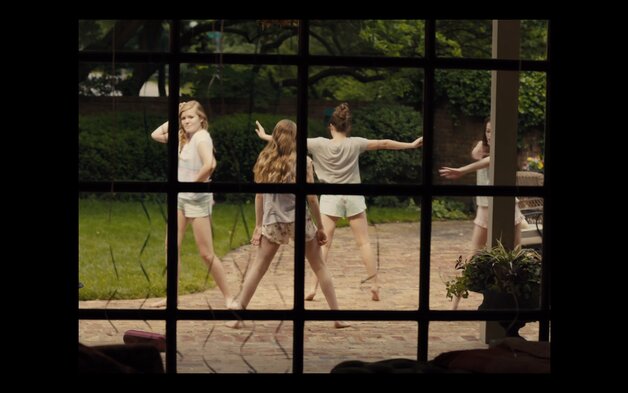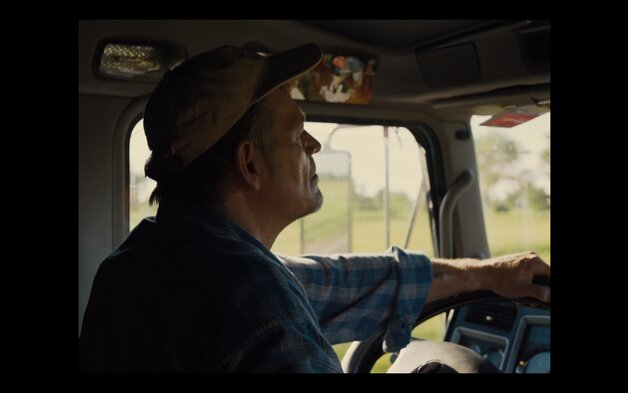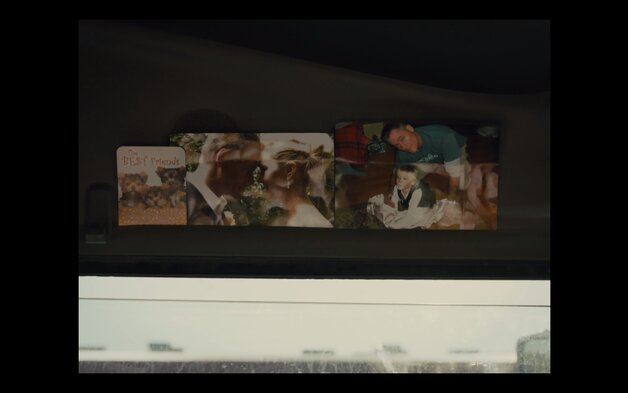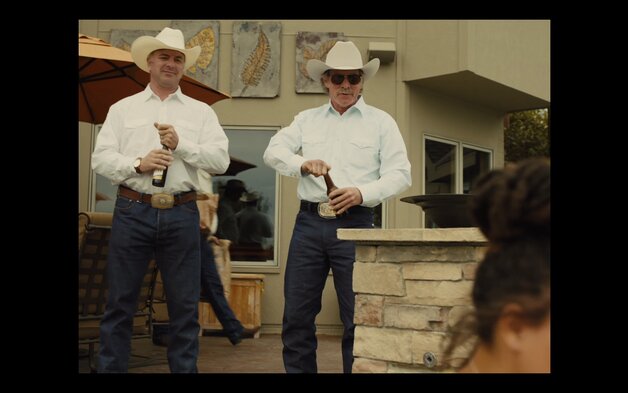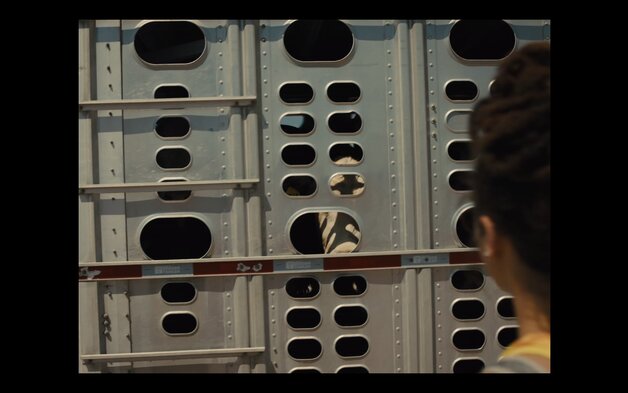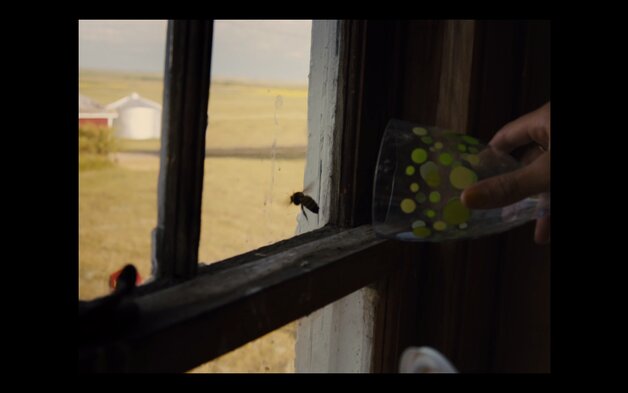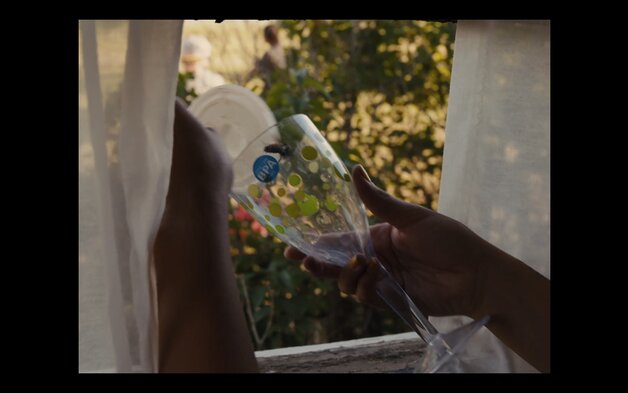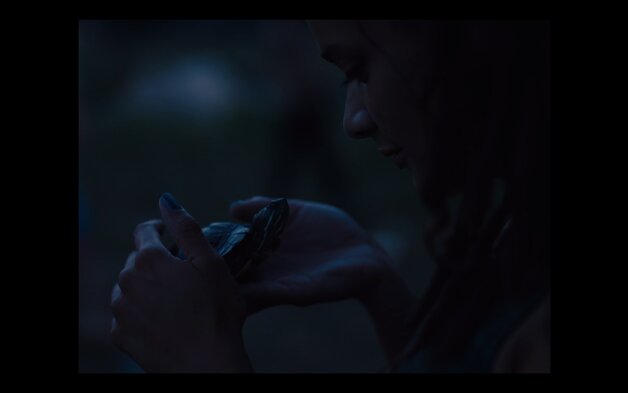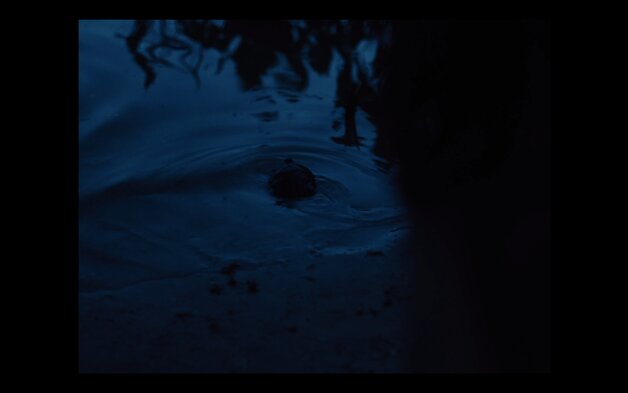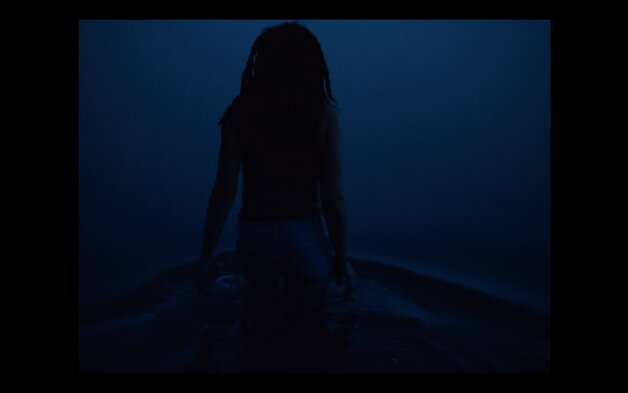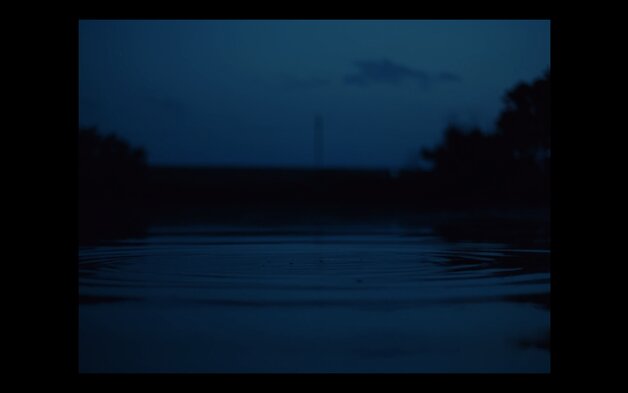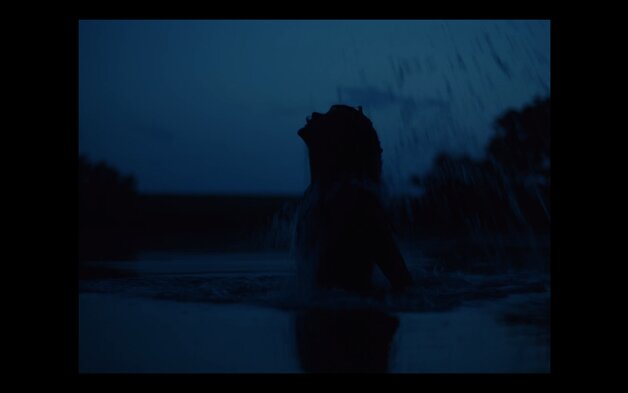Every cinephile has those collection of moments that change everything, that convince them of a filmmaker’s prowess. I’ve had a few: the frogs falling in Magnolia; a mystical tiger perched in a tree, staring at Keng in Tropical Malady; that moment when Giulietta Masina looks directly into the camera, breaking the fourth wall, and cries at the end of Nights of Cabiria.
Those were all early memories for me, back when I was became addicted to movies. But just one year ago, when watching Wuthering Heights, I experienced something new, something that affected me in a completely different way. While all the moments listed above are, in my opinion, stunning images outside the context of the film, the moment in Wuthering Heights where Catherine and Heathcliff fight in the mud absolutely fucking captivated me.
The screenshots don’t do it justice (which I realize is a dumb thing to say, since I’m going to use a bunch of screenshots to try and capture the beauty of Andrea Arnold’s filmmaking). What sets this moment apart from any other film I’ve ever seen is the intense attention to human touch; just how visceral a simple, playful mud fight can be.
What makes the scene stand out is how seriously it’s taken. When Heathcliff squeezes Catherine’s hand, and she stares back at him with the strangest look that combines playfulness, sternness and trust, it really made me realize how important “space” is in the film—the space between characters physically, the space between characters mentally, and the space between characters societally. It’s a strangely uncomfortable moment where you can see young flirtation and pent-up frustration pouring out of the characters.
And then, after watching that scene, I realized that the “space” between characters only suddenly stood out because Andrea Arnold’s cinematic vision had finally taken hold of me. It was more than just some pretty image on a screen—the power of the mud fight and the sudden realization I had was the result of sensory overload. I felt like I was part of the picturesque, gloomy, grey haze that hovered over Heathcliff and Catherine; I could feel the isolation, as this spot in the field was clearly in the middle of nowhere; I could sense the frustration in Heathcliff as he gripped Catherine’s hand. This introduced a bestial quality to the characters that Arnold is now obsessed with, as is evident with her latest film, American Honey, which takes that “space” between humans to the next level by pairing the main character up with animals with a set of stunning shots throughout the film.
Arnold’s journey from her first film, which depicts the main character’s separation from society in a straightforward manner, to the above shot, which cinematically captures the character’s connection with nature and disconnect with society, is a breathtaking, visual journey. To me, Arnold’s entire career has been building to the shot of that bear—it’s the culmination of her cinematic vision for characters.
Arnold’s progression as a filmmaker shows how attentive she came to be with the physical and emotional space between characters, constantly capturing it and displaying it poetically. She was able to bring this mud fight to life in Wuthering Heights for me by focusing on every seemingly minor, inconsequential moment of the tussle and dragging it out, forcing the viewer to experience the discomfort as it set in. After that, I didn’t just look at Arnold’s movies differently, but I started looking at all movies differently. I now crave that raw, visceral depiction of humans; that sensory overload.
It’s one thing to visually capture a seemingly meaningless moment and milk it for sensory overload. Think about any horror film (maybe Saw?) that forces you to watch a human body being torn apart. But, to me, what separates Arnold from most filmmakers is her scenes aren’t just visual—they’re cinematic. The movement of her camera speaks to a greater truth about humanity and how we function in society. That visceral depiction of the “space” between us all is something Arnold has come to master over the course of her movies, from Red Road to Fish Tank to Wuthering Heights to American Honey. This article will explore how she’s perfected it over time.
Red Road
Red Road, Arnold’s first feature, offers some early glimpses of her genius, exploring the idea of the spatial distance (physically and emotionally) between humans—in fact, Arnold introduces the idea in the very first scene.
The film features Jackie, who works in Glasgow as a CCTV operator, monitoring the Red Road Flats. While this scene depicts her going about her job on a normal day, it also introduces the fact that Jackie is invested in other people’s lives from a distance and lacks the ability to forge a real human connection.
The CCTV department highlights Arnold’s fascination with voyeurism—this idea that nobody can go about their lives without somebody watching them. What I love about Arnold is how she includes us in that voyeurism. I’ll elaborate on that idea as this article carries on, but I think even the above screenshots implicate the viewer a bit, pairing us alongside Jackie as she spends most of her day spying on others. Not only does her job require her to spend eight hours a day monitoring the streets of Glasgow, but after work, she spends her time following people around.
At work, she becomes especially fascinated with a man named Clyde, and then she starts to stalk him, slowly working her way into his life. As the movie progresses, we see Jackie and Clyde becoming closer and closer, eventually dancing at a party and having sex in his apartment. Jackie is aggressive, asking Clyde to choke her. When they’re done having sex, she grabs his used condom and hurries out the door without explanation. Then we see her in the bathroom, putting the semen inside herself. It’s then revealed she is framing Clyde for rape, as she hits herself with a rock to make their sex seems abusive.
As it’s soon revealed in the film, Clyde had killed Jackie’s husband and daughter in a drunk-driving accident years earlier. So while this reveals Jackie’s plot for revenge, the real power of the sex scene is more than just a simple plot beat—it’s a moment where, for the first time since her husband and daughter’s death, we see her allowing another human being to come in such close contact with her. For a woman who watches other people’s lives for a living, this aggressive re-entry into human contact is emotionally self-abusive; it’s her way of re-entering society, overcoming the pain of losing a family member.
Before the sex scene, Arnold highlights how broken and detached and lonely Jackie has become with a shot where Jackie pulls out her dead daughter’s jacket, wraps it around a doll, and hugs it like she can never let go.
Fish Tank
Much she did with Red Road, Arnold wastes no time bringing the viewer into the isolated world of the main character of Fish Tank. The first shots of the movie show Mia standing in a room, by herself, panting from working on a dance routine, staring out the window into the city of London.
From there, she walks outside and comes across a group of girls dancing in a parking lot. They should have a lot in common, right? They have something to talk about! They can be friends.
Except that Mia isn’t the friendly type. She stares at them, they ask why she’s staring at them, and before you know it, they’re all screaming at each other and Mia headbutts the shit out of one of the girls. Damn!
The scene is a bit goofy, but it does introduce this idea that Mia is emotionally disconnected. She can’t even share a nice moment with girls her age about she something she’s clearly passionate about. And this scene is especially revealing of her disconnect after we experience the following scene, which features Mia walking down a road, coming across a horse chained to a cement block, and trying to set it free.
What’s great here are the sudden tight close ups employed by Arnold. The tone, the feel, the cinematic depiction of Mia during this scene completely differs from the distance Mia has felt from others so far, both physically (staring out the window at the near-empty streets) and emotionally (her fight with the girls). She feels this sudden attraction to the horse after staring at it through the bars of a fence. And, much like that scene from Wuthering Heights, Arnold displays this bond by tightly framing Mia with the horse as Mia displays her first moment of tenderness so far. Her body language up to this point has been aggressive and unwelcoming; but with the horse, she’s gentle. Delicate. She forms a bond.
Arnold focuses on the chain that is imprisoning the horse as Mia beats away at it with a rock, trying desperately to set it free. Without any information about Mia thus far, I think this instantly helps us to understand the isolation Mia feels, and understand how she must also feel trapped in her life. Why else would she feel so compelled to help this random horse? This way of cinematically capturing the essence of a character without dialogue highlights exactly why I love Arnold’s filmmaking: She is truly about bringing the viewer into a character’s headspace; she focuses on emotion and physicality over information. The shots, the framing, the tone of scenes tell the story—not the dialogue.
By setting up Mia’s internal struggle visually, Arnold then allows the story of the film to unfold without any exposition or dialogue that explains why Mia is unsatisfied with her home life, with her love life, with her personal life. We don’t need details about any of it because we can feel that dissatisfaction in these opening moments. It’s what allows the rest of the movie to resonate so clearly—especially during one of the final scenes of the film, where Mia dances with her mother, finally letting her family into her life to partake in one of Mia’s passions.
Wuthering Heights
I sort of (purposely) buried the lede when I started this article discussing Wuthering Heights. Because it’s one thing to visually capture a seemingly inconsequential moment and milk it for sensory overload—it’s another thing to lay the foundation for the characters’ journey without using dialogue or exposition. The mud fight between Catherine and Heathcliff, as noted above, has this moment where Heathcliff is sitting on top of Catherine…
…which mirrors the final scene of the film—possibly the most riveting scene I’ve ever experienced: Catherine has died, and Heathcliff sneaks into her room to stare at her. As he begins to cry, he crawls into bed with Catherine, kisses her hair, her forehead, her lips, and then starts to have sex with her dead body.
Holy moly. Necrophilia?! This shit be cray.
But I love it. I love how audacious Arnold is. She could have easily backed down from making such an un-PC move. But she realized that this shocking moment of necrophilia was the best way to capture just how broken and isolated and doomed Heathcliff is after everything that has happened in the film.
Throughout Wuthering Heights, we see Arnold toying with perspective and distance. Heathcliff, a homeless boy taken in by Catherine’s family, has nobody close to him in his life—until Catherine extends a hand, offering to be his friend. While everyone else judges Heathcliff (yeah, they’re all racists), Catherine is open and non-judgmental. Arnold is constantly visually displaying the difference between Heathcliff’s hesitance with the discriminatory families…
…and his attraction to Catherine.
To take it one step further, Arnold frames Heathcliff and Catherine in several picturesque shots that isolate the two from anyone else in their lives. When Heathcliff shares the screen with anyone else? It’s usually awkward. There’s a disconnect. There’s fighting involved.
But with Catherine?
As I mentioned in the intro, there’s something very bestial about Heathcliff and Catherine’s fight in the mud. Clearly, that extends to the necrophilia, which is this sickening, over-the-top act where Heathcliff could not suppress his emotions and reacted physically. This idea—this inability to suppress physicality when your emotions are high—is really quite present in these scenes where Heathcliff and Catherine escape to the fields by themselves. Once isolated, they share all kinds of strange interactions that teter on “romantic,” but are really more bestial. Whether it’s an aggressive or a tender act, they truly do seem inhuman around each other, like when Catherine licks one of Heathcliff’s wounds, or when she pulls out a chunk of his hair.
Again, it’s not “romantic” in the traditional will-they-won’t-they set-up we’ve grown accustomed to with stories. They’re just…different. They have this unspoken bond they share with nobody else, and they express that bond through these physical moments.
That is, until, Catherine is taken in by a wealthy area family. After that, we see the distance growing. Suddenly, Catherine is framed far away from Heathcliff, just like everybody else had been throughout the film. Their physical connection is lost, and all that rests between them is an insurmountable breadth of space. The societal distance between them (a privileged white girl and an orphan black boy) suddenly translates to the widening of the emotional and physical space.
And being alone, we see Heathcliff searching for that physicality in other places. In fact, he quite literally embraces his bestial side with aggressive acts towards animals.
Soon, he runs away from home, and then returns years later to pursue Catherine once again. Fascinatingly, it’s like the two don’t miss a beat. Awkwardness lingers as Heathcliff makes his intentions to steal Catherine away from her husband clear, yet the two return to their muted, physical connection. Catherine expresses her pent-up frustration, the sadness she felt after Heathcliff left by pressing her heel right into his forehead at one of the spots where they hung out as children.
Re-introducing this bestial connection is what allows the slow dip into necrophilia to make so much sense. As Catherine slowly starts dying from an illness, we see the life draining out of Heathcliff as well. Emotionally, he is destroyed. And once Catherine dies, he is left with no option but to recreate physical bond he shared with her while she was alive. Much like Jackie embracing the doll dressed in her daughter’s clothing in Red Road, we see that Heathcliff truly has nobody, to the point where kissing and making love with a corpse is the most emotionally fulfilled he’ll be from this point on.
And by capturing the necrophilia with the same level of detail that she did with the mud fights, Arnold finds a connection between the two. Dead or alive, Catherine is the embodiment of Heathcliff’s emotional stability. Arnold cinematically captures this reality for Heathcliff in a way that is unnerving and undeniable—in a way that cannot be ignored. It forces the viewer, in a voyeuristic manner, to endure not only the pain he feels while staring at Catherine’s dead body, but also the emotional catharsis he achieves by committing an unforgivable act. And it’s all the result of Arnold crafting a narrative that depicts the emotional, physical, and societal space between them throughout their shared story.
American Honey
As mentioned in the intro, Arnold’s entire career has been building to the shot of a bear approaching the main character in American Honey, Star.
What’s truly amazing about this moment is how similarly bestial it feels compared to Wuthering Heights’ necrophilia, but also how much it differs in Star’s emotional journey. With Heathcliff, making love to Catherine’s dead body was his last-ditch effort at being a normal person; a dead end; catharsis for his journey with the only person he ever loved.
Star, on the other hand, has been freed from her emotional partner, Jake, at this point in the film (just a few minutes from the end of the movie). The connection she believed she was forming with Jake felt real and life-changing, yet Star would come to realize she needed to make personal changes before she could truly make a life for herself. While Heathcliff’s journey seems to end in that bed with Catherine, Star’s is just beginning when American Honey ends.
And how Arnold builds to that realization is incredible.
It all starts with Star ditching her family and heading on the road with Jake and a bunch of millennials, who all work for Krystal, traveling from city to city selling magazines. Dissatisfied with her home life, the prospect of starting a new one with Jake—a mysterious, rebellious boy who represents a deviation from her suppressing family—is enough for her to pack up and explore America. From there, Star becomes one with the American landscape, searching its contents for something that will offer a semblance of normalcy and satisfaction—something that will help her feel connected to humanity.
During that journey, however, Star comes across a number of different settings she finds unattainable or unrelatable. From wealthy suburban families to well-dressed cowboys to humbled fathers, each scene continually highlights the disconnect she feels.
In those first two shots, we see (almost as a recreation of the scene from Fish Tank) girls dancing while Star listens to Jake bullshit his way through a magazine sale. She is literally separated from them by a barrier, yet is forced to watch their childish attraction towards Jake.
The second two shots are fairly straightforward: This man travels the road, just like her, yet has someone back at home that keeps him going. He surrounds himself with photos that remind him of his family, mile after mile—Star, on the other hand, has nobody.
The final two shots are the most telling. They feature a group of “cowboys” who offer Star a bunch of money for her magazines. The prospect of making money to build a better life is enough for Star to follow the men to their home, where they cook up steaks and offer her alcohol. In a symbolic gesture, they offer a tequila that contains a dead worm. It’s symbolic because, as seen with the bear (and several other scenes throughout the movie), Star feels much more connected to nature and animals than she does with humans as she treks across America. Much like the wandering life Arnold constantly captures with her watchful eye, Star meanders across America without ever forming any real connections with anyone. And, in this moment with the cowboys, she is like that worm: trapped and alone. It’s no surprise, then, that Arnold makes Star eat that worm, which almost seems like a symbolic gesture of Star pushing that feeling of disconnect away.
Arnold continues to do that throughout the movie, actually. Every time she’s confronted with the reality that she is emotionally and physically separated from a true human connection, she reacts to the sign…
…by embracing Jake sexually.
While she certainly likes Jake, she’s really only attracted to what Jake represents as opposed to who he is. He’s the path to a different life, as opposed to being someone who will make Star a better person.
But Jake burns the prospect of a better life for Star. After she masturbates for a field worker to earn some extra cash, Jake murders the man. With blood splattered on his shirt, Star takes one look at Jake and clearly doesn’t feel that bestial urge that united Heathcliff and Catherine. You can feel their connection dissolving, and Arnold displays Star’s realization with the bear scene, and this moment where Star captures a bee trapped indoors and lets it outside.
With both the bee and the bear, we see Catherine no longer ignoring the signs the animals have been offering her. She’s embracing the idea that she must separate herself from people she has no true connection with and go out into the world on her own to discover herself.
That entire journey leads up to the movie’s final scene, where Jake hands Star a tiny turtle. It’s almost like he’s finally giving her permissions to let him go—to forget about him and to concentrate on her growth as an individual. And Arnold is acutely aware of it all. As a perfect cap to Arnold’s filmography thus far, Star walks to a nearby pond and lets the turtle go into the water. Then Star follows the turtle, dipping down into the water and emerging ferociously, as if she’s being baptized by the Earth itself, ready for a new life.

